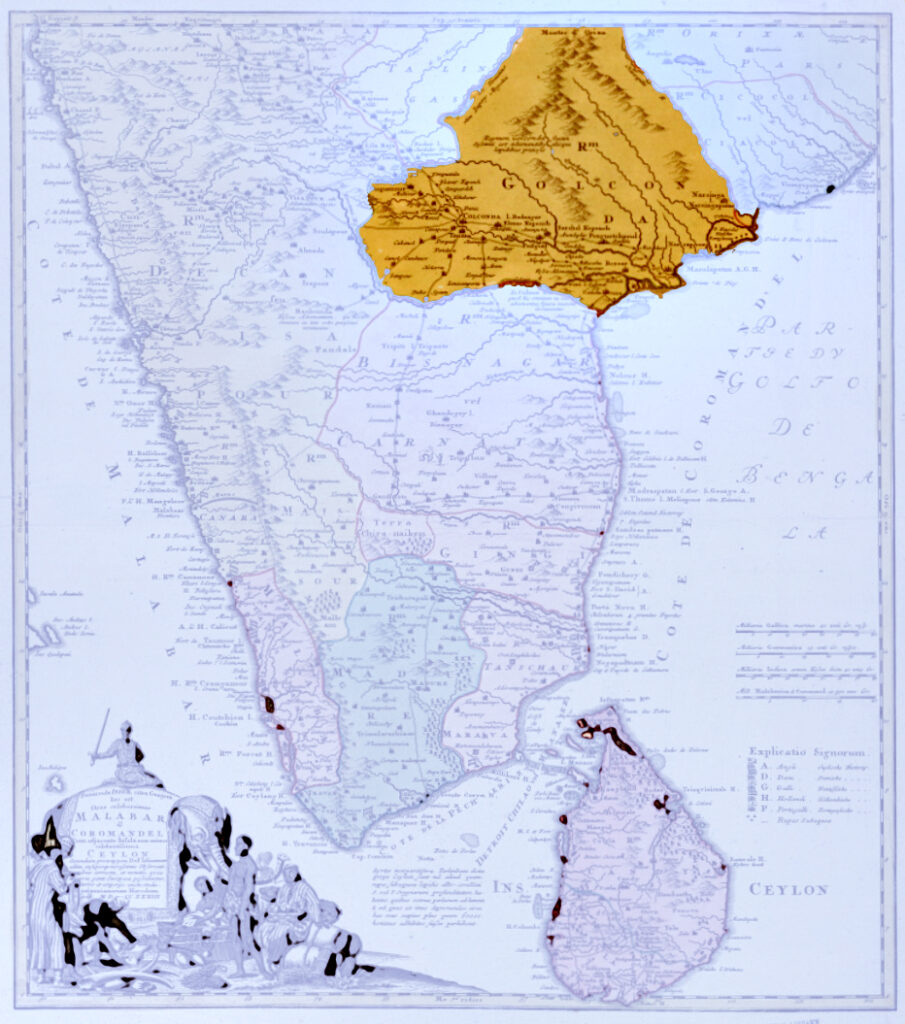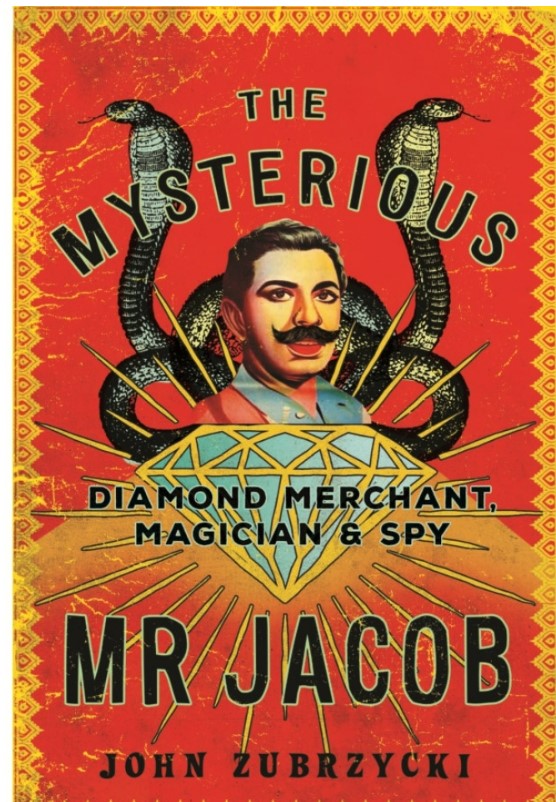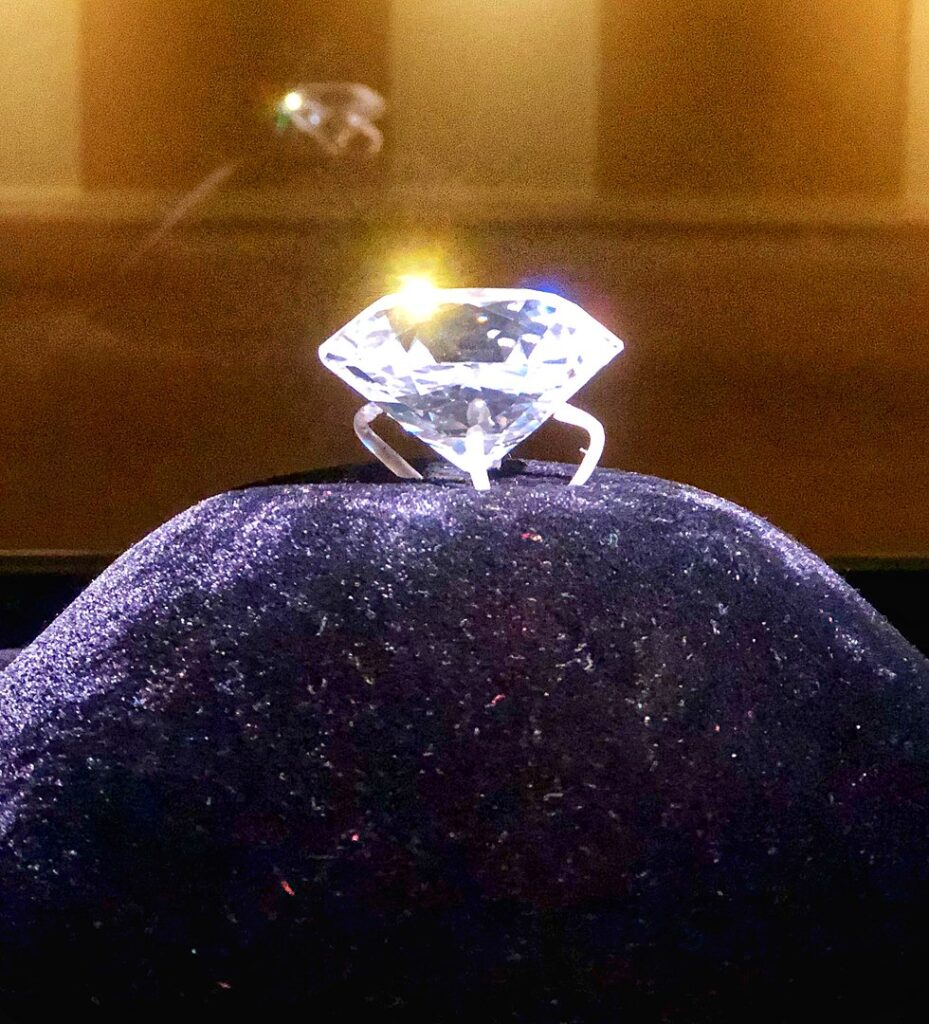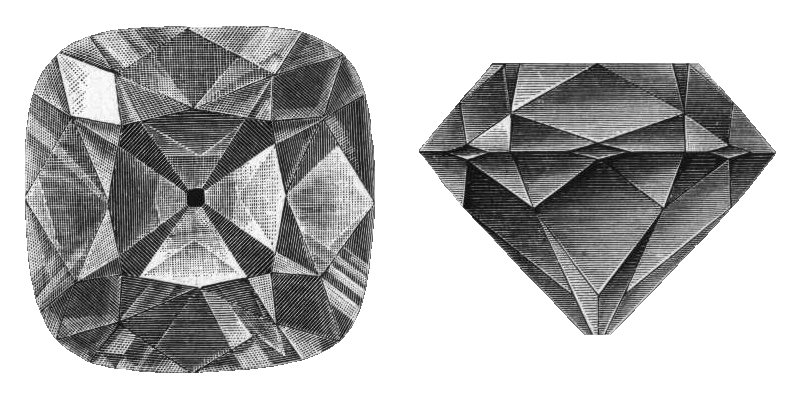Since ancient times, India was the diamond capital of India till South Africa emerged on the scene in the 18th century. Indian diamonds were most sought after due to their beauty and exceptional qualities. Hindus ascribed even magical and divine powers to them, with Kohinoor being considered as Surya’s stone. Most of the diamonds were mined from the Krishna Godavari delta in Andhra Pradesh. The Golconda diamond industry peaked between the 16th and 18th centuries when the region had 23 mines, Kollur Mine being the most prolific, and 30,000 people working at one time in one mine. The total output of Golconda’s mines was estimated to be massive 10,000,000 carats (2.0 tons) in those two centuries. Because of such brilliance, these diamonds have attracted many controversies, frauds, scandals and even murders.

First one:
The Pitt diamond, like Kohinoor, was also mined from Kollur mines in Golconda and was of 410 carats originally. In that era, Pitt surpassed all the diamonds known worldwide in beauty and weight. An enslaved person found it in 1698 and hid it in a wound in his left leg. However, a British Captain came to know of it and took its possession after killing him. The East India Company had already started flexing its muscles in India then. The Captain further sold it to a prominent Indian diamond merchant Jamchand for quite a hefty amount. In 1701, it was bought by Thomas Pitt, the Governor of Madras, for £20,400 and sent to London after concealing it in his son’s shoe in 1702. After the British society came to know of the theft, Pitt started to be mocked. The leading satirist of that time, Alexander Pope, penned these sarcastic lines:
‘Asleep and naked as an INDIAN lay An honest factor stole a gem away; He pledged it to the Knight, the Knight had wit, So kept the diamond, and the rogue was bit’.
Pitt, unperturbed by such derision, had the diamond cut to only 141 carats by the diamond cutter Harris to enhance its brilliance. He sold it to French Royals for an astounding £135,000 in 1717, at roughly seven times its purchase value. France was getting rich then due to Colonial spoils, and they could afford it. Since then, it has remained in France and is presently displayed in the Louvre Museum in Paris. Its current value is estimated at an astonishing Rs. 500 crores. Its flawless brilliance and perfect cut affirm its status as the finest diamond in the world.
Another Cousin:
Similar is the story of the 189-carat Orlov diamond. Like Kohinoor, it was also mined from Kollur mines and was set as an eye of a temple deity in the Deccan. A French soldier who deserted his army in the Carnatic wars saw the diamond in the temple in Srirangam while escaping from his erstwhile colleagues. One day, he disguised himself as a Hindu and stole the diamond in the dead of night after gouging it out from the deity. He then sold it to another merchant, and it kept passing through different hands until it reached Shaffrass, a wealthy Persian merchant. Count Grigory Grigorievich Orlov, a Russian military general, paid an astronomical 1.4 million Dutch florins to the Persian for the coveted diamond. He was romantically involved with the Russian Queen Catherine Alekseyevna. Orlov killed her husband, Peter III, at her instigation in 1762. Though both wanted to marry each other, her advisors strongly advocated it. They continued to live as a couple and had a son out of wedlock, creating a storm in the conservative Russian society. After years of living together, the couple grew apart, and Orlov strongly felt his life was in danger. He decided to rekindle their love to ward off any such attempt, and nothing could be better than giving her a world-class diamond. Orlov gifted it to the Queen but still failed to win her affection. He found himself replaced by her new young lover eventually. The Queen had her jeweller design an Imperial sceptre containing the diamond in 1774, currently displayed in Moscow’s Kremlin Museum. It is suggested nowadays that the Orlov diamond is none but the Great Mogul diamond.

One more Cousin
The 3rd cousin, The Jacob Diamond, a colourless diamond from Golconda mines, was once a massive 400-carat (80 g) in weight. It draws its name from its first owner, Alexander Malcolm Jacob of Shimla, who wanted to sell it to Nizam of Hyderabad in 1891 for 5 million rupees. Jacob was a mysterious man and was known for his ways of making quick money. Once, he was even dubbed a Russian spy, and many authors of his time went on to cast him as a shady character in their novels.

Jacob learned about Nizam and his penchant for everything good in life. He succeeded in selling many gems to Nizam and now looking to sell his pet diamond to him. Nizam indeed paid him an advance of 23 Lakhs and the remaining to be made after receiving the diamond, though Nizam still had a right to reject it. However, when he saw it, he muttered ‘Na Pasand’ in Persian. Jacob was aghast, and it seemed as if the earth had vanished below his feet.
The process later became murky and long-drawn and eventually, courts had to be involved, which made Nizam consider it as manhoos as Kohinoor and hide it away. After many long years, the last nizam of the Hyderabad State, Mir Osman Ali Khan, found the diamond in the toe of his father’s shoe (Mahboob Ali Khan) at Chowmahalla Palace and used it as a paperweight for a long time. In the 1940s, Nizam was the wealthiest person in the world and his cumulative wealth amounted to $2 billion. The US GDP at that time was $200 billion, and hence he was worth 1% of the US economy. Such was his opulence that he used to treat the then-185-carat Jacob diamond as a paperweight. His was the only princely state that used to have its own currency, Osmania Sikka.

Later, the Nizams wished to sell the Jacob, among many other jewels, but the Government of India blocked the sale, citing that the gems were a national treasure that could not be sold to anyone else. The RBI subsequently bought it for an estimated $13 million in 1995, and it is currently held at its vault in Mumbai. It was sent to Europe once for cutting and polishing and now has a rectangular cushion-cut with 58 facets and measures 39.5 millimetres (1.56 in) long, 29.25 millimetres (1.152 in) wide and 22.5 millimetres (0.89 in) deep, still double the size of Kohinoor. The diamond weighs 184.75 carats (36.90 g), sharp degradation from 400 carats at its birth but still the seventh largest diamond in the world. Unlike the famous Koh-i-Noor, the Jacob Diamond has only changed hands twice in its existence and has not been associated with violence.
Not a single big diamond, except Jacob, is in India anymore, and they became a pathetic symbol of India’s subservience and submission.
Written by Amit Agarwal, author of the bestsellers on Indian history titled “Swift horses Sharp Swords” and a “Never Ending Conflict”.
Follow me on Twitter @amit1119 and Instagram/ Facebook at amitagarwalauthor.
You may buy the books at the following links:
https://garudabooks.com/a-never-ending-conflict-episodes-from-indic-resistance
https://www.amazon.in/dp/B0B6J5PKPR
https://garudabooks.com/swift-horses-sharp-swords-medieval-battles-which-shook-india-hindi (Hindi)
![]()
- How Hindu rituals spawned numerous advancements in science, maths and other arts - March 13, 2024
- Naga Sadhus and their fighting skills - February 20, 2024
- Lessons for India from the Israel-Palestine conflict - October 12, 2023

